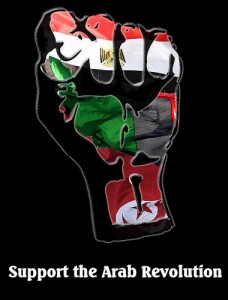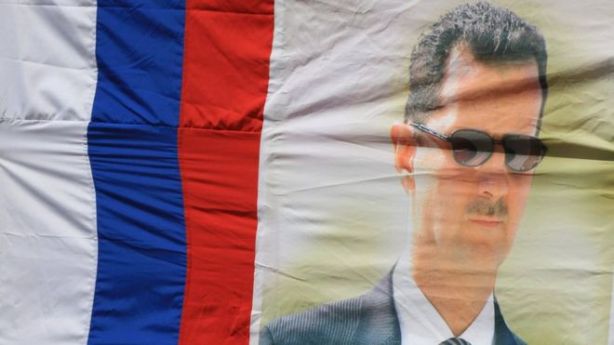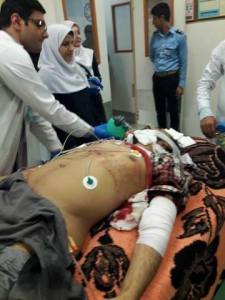 [The Hoaxer Project Report, pp. 39-41] WRITTEN BY LAIRD WILCOX
[The Hoaxer Project Report, pp. 39-41] WRITTEN BY LAIRD WILCOX
Robert F. Kennedy wrote:
“What is objectionable, what is dangerous about extremists is not that they are extreme, but that they are intolerant. The evil is not what they say about their cause, but what they say about their opponents.”
In analyzing the rhetoric and propaganda of several hundred militant “fringe” political and social groups across the political spectrum, I have identified a number of specific traits or behaviors that tend to represent the extremist “style”…
1. CHARACTER ASSASSINATION.
Extremists often attack the character of an opponent rather than deal with the facts or issues raised. They will question motives, qualifications, past associations, alleged values, personality, looks, mental health, and so on as a diversion from the issues under consideration. Some of these matters are not entirely irrelevant , but they should not serve to avoid the real issues.
Extremists object strenuously when this is done to them, of course!
2. NAME-CALLING AND LABELING.
Extremists are quick to resort to epithets (racist, subversive, pervert, hate monger, nut, crackpot, degenerate, un-American, anti-semite, red, commie, nazi, kook, fink, liar, bigot, and so on) to label and condemn opponents in order to divert attention from their arguments and to discourage others from hearing them out. These epithets don’t have to be proved to be effective; the mere fact that they have been said is often enough.
3. IRRESPONSIBLE SWEEPING GENERALIZATIONS.
Extremists tend to make sweeping claims or judgments on little or no evidence, and they have a tendency to confuse similarity with sameness. That is, they assume that because two (or more) things, events, or persons are alike in some respects, they must be alike in most respects. The sloppy use of analogy is a treacherous form of logic and has a high potential for false conclusions.
4. INADEQUATE PROOF FOR ASSERTIONS.
Extremists tend to be very fuzzy about what constitutes proof, and they also tend to get caught up in logical fallacies, such as post hoc ergo propter hoc (assuming that a prior event explains a subsequent occurrence simply because of their before and after relationship). They tend to project wished-for conclusions and to exaggerate the significance of information that confirms their beliefs while derogating or ignoring information that contradicts them. They tend to be motivated by feelings more than facts, by what they want to exist rather than what actually does exist. Extremists do a lot of wishful and fearful thinking.
5. ADVOCACY OF DOUBLE STANDARDS.
Extremists generally tend to judge themselves or their interest group in terms of their intentions, which they tend to view very generously, and others by their acts, which they tend to view very critically. They would like you to accept their assertions on faith, but they demand proof for yours. They tend to engage in special pleading on behalf of themselves or their interests, usually because of some alleged special status, past circumstances, or present disadvantage.
6. TENDENCY TO VIEW THEIR OPPONENTS AND CRITICS AS ESSENTIALLY EVIL.
To the extremist, opponents hold opposing positions because they are bad people, immoral, dishonest, unscrupulous, mean-spirited, hateful, cruel, or whatever, not merely because they simply disagree, see the matter differently, have competing interests, or are perhaps even mistaken.
7. MANICHAEAN WORLDVIEW.
Extremists have a tendency to see the world in terms of absolutes of good and evil, for them or against them, with no middle ground or intermediate positions. All issues are ultimately moral issues of right and wrong, with the “right” position coinciding with their interests. Their slogan is often “those who are not with me are against me.”
8. ADVOCACY OF SOME DEGREE OF CENSORSHIP OR REPRESSION OF THEIR OPPONENTS AND/OR CRITICS.
This may include a very active campaign to keep opponents from media access and a public hearing, as in the case of blacklisting, banning or “quarantining” dissident spokespersons. They may actually lobby for legislation against speaking, writing, teaching, or instructing “subversive” or forbidden information or opinions. They may even attempt to keep offending books out of stores or off of library shelves, discourage advertising with threats of reprisals, and keep spokespersons for “offensive” views off the airwaves or certain columnists out of newspapers. In each case the goal is some kind of information control. Extremists would prefer that you listen only to them. They feel threatened when someone talks back or challenges their views.
9. TEND TO IDENTIFY THEMSELVES IN TERMS OF WHO THEIR ENEMIES ARE: WHOM THEY HATE AND WHO HATES THEM.
Accordingly, extremists may become emotionally bound to their opponents, who are often competing extremists themselves. Because they tend to view their enemies as evil and powerful, they tend, perhaps subconsciously, to emulate them, adopting the same tactics to a certain degree. For example, anti-Communist and anti-Nazi groups often behave surprisingly like their opponents. Anti-Klan rallies often take on much of the character of the stereotype of Klan rallies themselves, including the orgy of emotion, bullying, screaming epithets, and even acts of violence. To behave the opposite of someone is to actually surrender your will to them, and “opposites” are often more like mirror images that, although they have “left” and “right” reversed, look and behave amazingly alike.
10. TENDENCY TOWARD ARGUMENT BY INTIMIDATION.
Extremists tend to frame their arguments in such a way as to intimidate others into accepting their premises and conclusions. To disagree with them is to “ally oneself with the devil,” or to give aid and comfort to the enemy. They use a lot of moralizing and pontificating, and tend to be very judgmental. This shrill, harsh rhetorical style allows them to keep their opponents and critics on the defensive, cuts off troublesome lines of argument, and allows them to define the perimeters of debate.
11. USE OF SLOGANS, BUZZWORDS, AND THOUGHT-STOPPING CLICHES.
For many extremists shortcuts in thinking and in reasoning matters out seem to be necessary in order to avoid or evade awareness of troublesome facts and compelling counter-arguments. Extremists generally behave in ways that reinforce their prejudices and alter their own consciousness in a manner that bolsters their false confidence and sense of self-righteousness.
12. ASSUMPTION OF MORAL OR OTHER SUPERIORITY OVER OTHERS.
Most obvious would be claims of general racial or ethnic superiority–a master race, for example. Less obvious are claims of ennoblement because of alleged victimhood, a special relationship with God, membership in a special “elite” or “class,” and a kind of aloof “highminded” snobbishness that accrues because of the weightiness of their preoccupations, their altruism, and their willingness to sacrifice themselves (and others) to their cause. After all, who can bear to deal with common people when one is trying to save the world! Extremists can show great indignation when one is “insensitive” enough to challenge these claims.
13. DOOMSDAY THINKING.
Extremists often predict dire or catastrophic consequences from a situation or from failure to follow a specific course, and they tend to exhibit a kind of “crisis-mindedness.” It can be a Communist takeover, a Nazi revival, nuclear war, earthquakes, floods, or the wrath of God. Whatever it is, it’s just around the corner unless we follow their program and listen to the special insight and wisdom, to which only the truly enlightened have access. For extremists, any setback or defeat is the “beginning of the end!”
14. BELIEF THAT IT’S OKAY TO DO BAD THINGS IN THE SERVICE OF A “GOOD” CAUSE.
Extremists may deliberately lie, distort, misquote, slander, defame, or libel their opponents and/or critics, engage in censorship or repression, or undertake violence in “special cases.” This is done with little or no remorse as long as it’s in the service of defeating the Communists or Fascists or whomever. Defeating an “enemy” becomes an all-encompassing goal to which other values are subordinate. With extremists, the end justifies the means.
15. EMPHASIS ON EMOTIONAL RESPONSES AND, CORRESPONDINGLY, LESS IMPORTANCE ATTACHED TO REASONING AND LOGICAL ANALYSIS.
Extremists have an unspoken reverence for propaganda, which they may call “education” or “consciousness-raising.” Symbolism plays an exaggerated role in their thinking, and they tend to think imprecisely and metamorphically. Harold D. Lasswell, in his book, *Psychopathology and Politics*, says, “The essential mark of the agitator is the high value he places on the emotional response of the public.” Effective extremists tend to be effective propagandists. Propaganda differs from education in that the former teaches one what to think, and the latter teaches one how to think.
16. HYPERSENSITIVITY AND VIGILANCE.
Extremists perceive hostile innuendo in even casual comments; imagine rejection and antagonism concealed in honest disagreement and dissent; see “latent” subversion, anti-semitism, perversion, racism, disloyalty, and so on in innocent gestures and ambiguous behaviors. Although few extremists are clinically paranoid, many of them adopt a paranoid style with its attendant hostility and distrust.
17. USE OF SUPERNATURAL RATIONALE FOR BELIEFS AND ACTIONS.
Some extremists, particularly those involved in “cults” or extreme religious movements, such as fundamentalist Christians, militant Zionist extremists, and members of mystical and metaphysical organizations, claim some kind of supernatural rationale for their beliefs and actions, and that their movement or cause is ordained by God. In this case, stark extremism may become reframed in a “religious” context, which can have a legitimizing effect for some people. It’s surprising how many people are reluctant to challenge religiously motivated extremism because it represents “religious belief” or because of the sacred-cow status of some religions in our culture.
18. PROBLEMS TOLERATING AMBIGUITY AND UNCERTAINTY.
Indeed, the ideologies and belief systems to which extremists tend to attach themselves often represent grasping for certainty in an uncertain world, or an attempt to achieve absolute security in an environment that is naturally unpredictable or perhaps populated by people with interests opposed to their own. Extremists exhibit a kind of risk-aversiveness that compels them to engage in controlling and manipulative behavior, both on a personal level and in a political context, to protect themselves from the unforeseen and unknown. The more laws or “rules” there are that regulate the behavior of others–particular their “enemies”–the more secure extremists feel.
19. INCLINATION TOWARD “GROUPTHINK.”
Extremists, their organizations, and their subcultures are prone to a kind of inward-looking group cohesiveness that leads to what Irving Janis discussed in his excellent book Victims of Groupthink. “Groupthink” involves a tendency to conform to group norms and to preserve solidarity and concurrence at the expense of distorting members’ observations of facts, conflicting evidence, and disquieting observations that would call into question the shared assumptions and beliefs of the group.
Right-wingers (or left-wingers), for example, talk only with one another, read material that reflects their own views, and can be almost phobic about the “propaganda” of the “other side.” The result is a deterioration of reality-testing, rationality, and moral judgment. With groupthink, shared illusions of righteousness, superior morality, persecution, and so on remain intact, and those who challenge them are viewed with skepticism and hostility.
20. TENDENCY TO PERSONALIZE HOSTILITY.
Extremists often wish for the personal bad fortune of their “enemies,” and celebrate when it occurs. When a critic or an adversary dies or has a serious illness, a bad accident, or personal legal problems, extremists often rejoice and chortle about how they “deserved” it. I recall seeing right-wing extremists celebrate the assassination of Martin Luther King and leftists agonizing because George Wallace survived an assassination attempt. In each instance their hatred was not only directed against ideas, but also against individual human beings.
21. EXTREMISTS OFTEN FEEL THAT THE SYSTEM IS NO GOOD UNLESS THEY WIN.
For example, if they lose an election, then it was “rigged.” If public opinion turns against them, it was because of “brainwashing.” If their followers become disillusioned, it’s because of “sabotage.” The test of the rightness or wrongness of the system is how it impacts upon them…
 This text was written by Dyab Abu Jahjah in 2012. This is his site.
This text was written by Dyab Abu Jahjah in 2012. This is his site.




 reprinted from
reprinted from